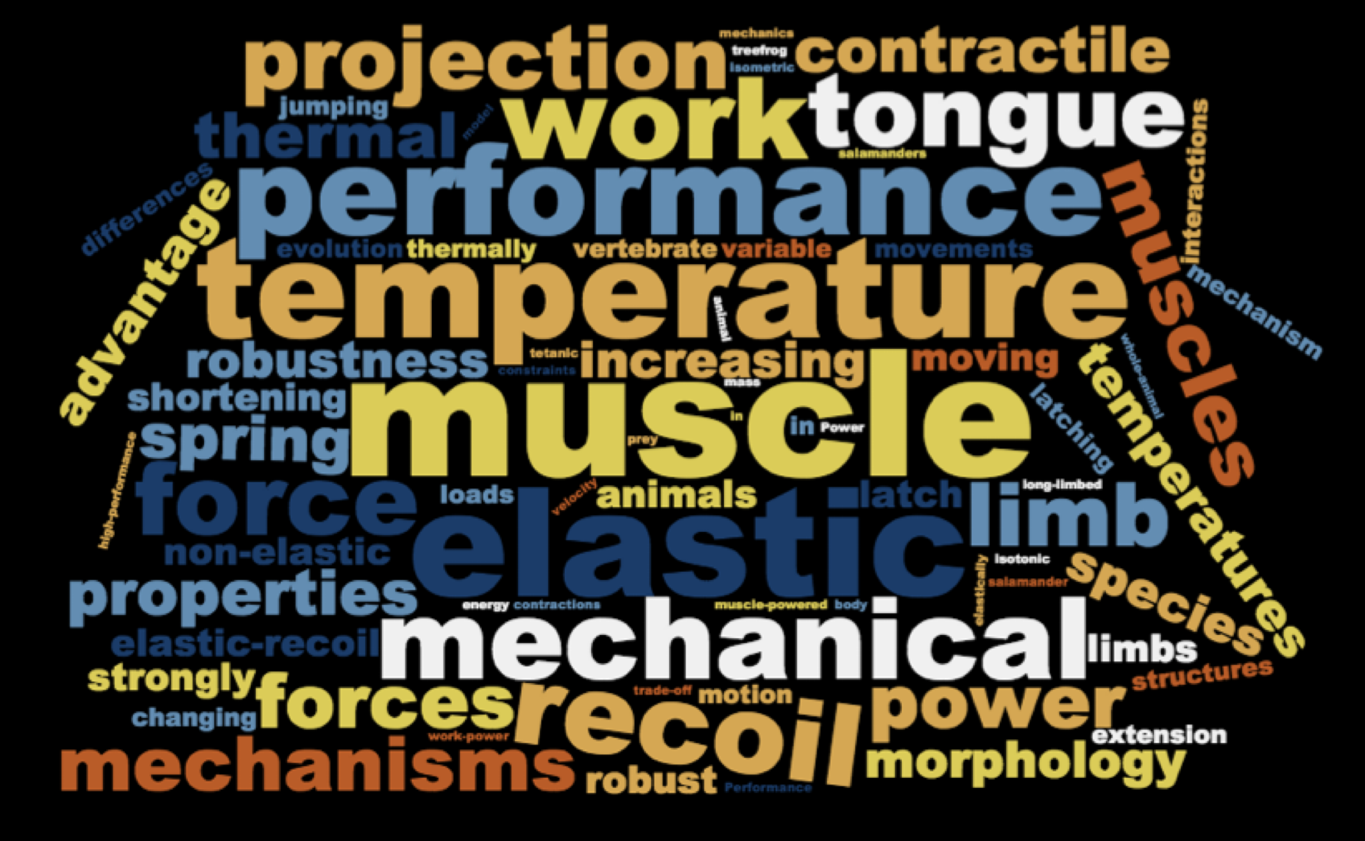About Impulsive MURI

A singular achievement of our MURI team is a paradigm shift about the role and significance of energetic losses at the tiny sizes that exemplify the fastest, repeatable movements on the planet. At the start of our team’s research, small, fast biological systems were primarily studied and modeled using an idealized framework in which massless, Hookean springs actuate movement, and instantaneous latches release stored elastic energy. This idealized framework was accompanied by an assumption of open loop control and a perspective that energetic losses are simply an unfortunately large, proportional cost of fast movement at small sizes. However, in our team’s process of solving the mechanisms of biological extreme capabilities, testing design principles with synthetic systems, and mathematically modeling principles of movement, we formally defined a new class of mechanisms - latch-mediated spring actuation (LaMSA) - and discovered that elastic recoil and latch mediation can both take advantage of and overcome energetic losses to achieve extraordinarily precise movements with high power density that also enable controllable and repeatable cascading energy release.
Our team has developed a new, foundational understanding of the evolutionary mechanics of impulsive biological systems, which use elastic energy storage and release mechanisms to overcome intrinsic limitations of movement achieved by actuators (e.g., muscles or motors) alone. Our discoveries integrate biomechanics, materials science, mathematical modeling, and engineering and have yielded the following significant contributions:
- A framework for impulsive systems, including a cross-disciplinary set of principles underlying the dynamics, energetics, and tradeoffs of latch-mediated spring actuation (LaMSA) (Ilton et al., 2018; Longo et al., 2019)
- Unique instrumentation and experimental methods to capture impulsive events with unprecedented spatial and temporal resolution (Ilton et al., 2019; Jorge et al., 2021)
- Material models and experiments that reveal the physical limitations and opportunities arising from elastic recoil and material instabilities (Ilton et al., 2019; Liang & Crosby, 2020; Kim et al., 2021)
- Biological impulsive model systems and mechanisms within the LaMSA framework, including mantis shrimp, gall midges, trap-jaw ants, cone snails, cuttlefish, grasshoppers, and frogs (Farley et al., 2019a, 2019b; Sutton et al., 2019; Patek, 2019; Olberding et al., 2019; Schulz et al., 2019; Longo et al., 2021; Harrison et al., 2021)
- Physical models that replicate latch and movement capabilities of biological impulsive systems and enable fundamental analysis of LaMSA principles (Duduta et al., 2019; Divi et al., 2020; Steinhardt et al., 2021).
Our team is funded by a MURI (Multidisciplinary University Research Initiative). The Impulsive MURI team's research is based upon work supported by, or in part by, the U. S. Army Research Laboratory and the U. S. Army Research Office under contract/grant number W911NF-15-1-0358.
